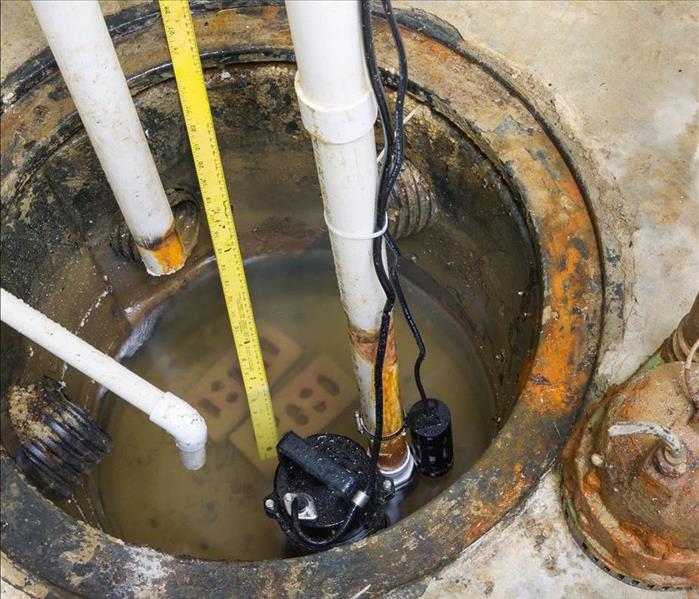3 Parts of a Sump Pump and How to Maintain Them
10/20/2020 (Permalink)
When Is It Time For Pump Maintenance?
Is your home in Denver, CO, at risk for basement flooding? If so, you probably have a sump pump installed. These devices may seem complicated, but there are only a few crucial parts to the machine. These need to properly maintained, or else the pump may break and flood your home. If you're unsure if it is time for pump maintenance, contact a professional to schedule an inspection or ask questions.
1. The Float
The float on your sump pump functions in almost the exact way that the float on your toilet does. When water drains into the basin, the float will rise with the water level. Once the water level is high enough, the pump will turn on and begin to dispose of the water. It's crucial that the float is clear of any debris. Otherwise, the pump may not turn on when needed due to weight changes incorrectly perceived by the float.
2. Drain Hose
The drain hose carries water that the pump has removed from your home away from the foundation. It's important that the outflow of this pipe be unobstructed. If there is any dirt or other debris blocking the pipe, it may clog and back up into your basement. This pipe should also extend to at least twenty feet from your home's foundation. In certain circumstances, such as if your home is in a sunken area of land, the pipe must extend further. This is necessary so that the disposed water does not flow back toward the foundation and cause water damage.
3. Sump Pit
The sump pit functions as a water collector. As the lowest point in your home's basement, all water will flow into it. The bottom of the pit should be filled with gravel. The gravel acts as a filter; it prevents debris from entering the pump directly. The gravel should always be visible, and any debris will need to be cleaned out, or the pump may eventually become clogged and not function properly—or burn up.
With a bit of basic knowledge, it is a simple task to maintain your sump pump. It's important that maintenance is carried out, otherwise, your pump can fail you when it is needed most.





 24/7 Emergency Service
24/7 Emergency Service
